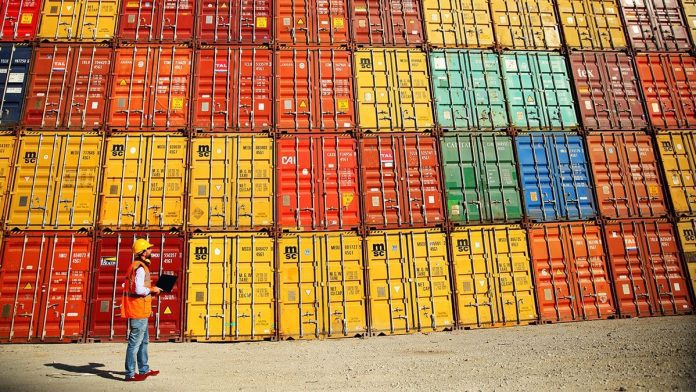The practicalities of implementing decentralised blockchain governance, and the fear it raises within the supply chain about a lack of control, remain major stumbling blocks for the technology, said a panel from the food industry at Blockchain Expo in Amsterdam.
The distributed ledger technology remains in its infancy; its role in supply chain tracking is only narrowly tested. This is the case in the food industry, in particular. “Blockchain in food is like teenage sex,” said Vincent Doumeizel, vice president of food and sustainability at Lloyd’s Register, in a memorable, throwaway analogy. “Lots of people are talking about it, but very few are doing it, and those that are are generally doing it badly.”
Even the technology’s principle benefits have shifted in their perception, away from simple traceability. “I don’t think traceability is the most important benefit blockchain can bring,” commented Marieke de Ruyter de Wildt, founder of The Fork, a blockchain consultancy in the agricultural space. ”It is more about risk management. We can do traceability with other cheaper systems today.”
Brian Heinen, the panel chair, and senior strategic producer for Local Producer, a European tech consultancy, responded: “There are three solutions blockchain can bring to a company, whether a startup or a large corporation: traceability, transparency, and governance. I agree blockchain doesn’t help bring any more value in terms of trust than existing systems.”
He panned out. “Blockchain is not so much about tech advancement as community advancement. The ability to participate in new models and systems is exciting. No one has a blueprint yet,” he said.
The challenge for the market is to accept the decentralised governance of data. “A lot of companies are applying old solutions to new models, which is not working well. The biggest advantage of blockchain is being missed. Distributed design should see the rise of a new type of democracy somehow,” said Doumeizel.
The very principle of distributed governance has buoyed innovation in the sector, notably among startups, said de Wildt. “For most enthusiasts, the promise we can redesign a more efficient and sustainable model, is the very reason why they jumped on board in the first place,” she said.
But both private and public sectors are struggling with the challenge to foster a decentralised ledger of logistics, supply chain and trade. “The market is used to a centralised model,” said de Wildt. “To distribute is great in theory, but challenging in real life.”
The private sector is struggling with the prospect of losing control. “For private companies, it is very difficult,” she said. At the same time, the public sector is struggling with bandwidth, in order just to grasp the technical implications. “NGOs are jumping in, but they don’t have capacity.”
In the end, “two or three Google-style” blockchain platforms will emerge, suggested de Wildt, citing also the extant challenge for platform providers of supply-chain interoperability.
The supply chain will be simplified, with operatives in the middle entirely removed in some cases, said Lorenzo di Cataldo, business product owner at blockchain platform Ambrosus. “When i call Uber, I call Uber because I trust the platform, and trust that it will get a professional driver. I need the platform. If all the data about the driver is in a blockchain, I don’t need Uber anymore – because I can trust the data is tamper proof. The platform economy will be disrupted sooner or later,” said di Cataldo.
Heinen suggested the role of humans, evidenced by a physical handshake, will remain critical in the blockchain supply chain, between the producer and the purchaser. “Uber is not the best example for me,” he said. “When I speak to social impact agencies, a big question they have, which comes from the farmers at the processing plants, is that ROI is not as big a concern for them as building trust in a traditional way.”
Dermot O’Gorman, chief executive of the World Wide Fund (WWF) for Nature, commented: “It doesn’t get rid of intermediaries, but changes the nature of them.” He described a diamond mining application, deployed by De Beers, that allows miners in Africa to attach photos of diamonds to a blockchain to record their provenance, and their own role in it.
The application runs analysis of the different faces of diamonds, assigning a fingerprint to each stone. It allows photos of the miner to be attached to the record, as well. “They can now sell straight into Europe, and bypass weeks of trading through intermediaries. It is a great example of where blockchain adds value at local level, telling a story of blood-free diamonds at the end,” said O’Gorman.
The cultural change required for the decentralised blockchain model to dominate will take time. But momentum is building, said Doumeizel. “Each time we eat and drink, we vote for the world we want to build. Do you choose sustainable food, which is GM free? We are at the convergence of two powerful forces – of disruptive technologies, like blockchain, and of educated consumers, who know what they want to eat and drink, and how they want to live.”

